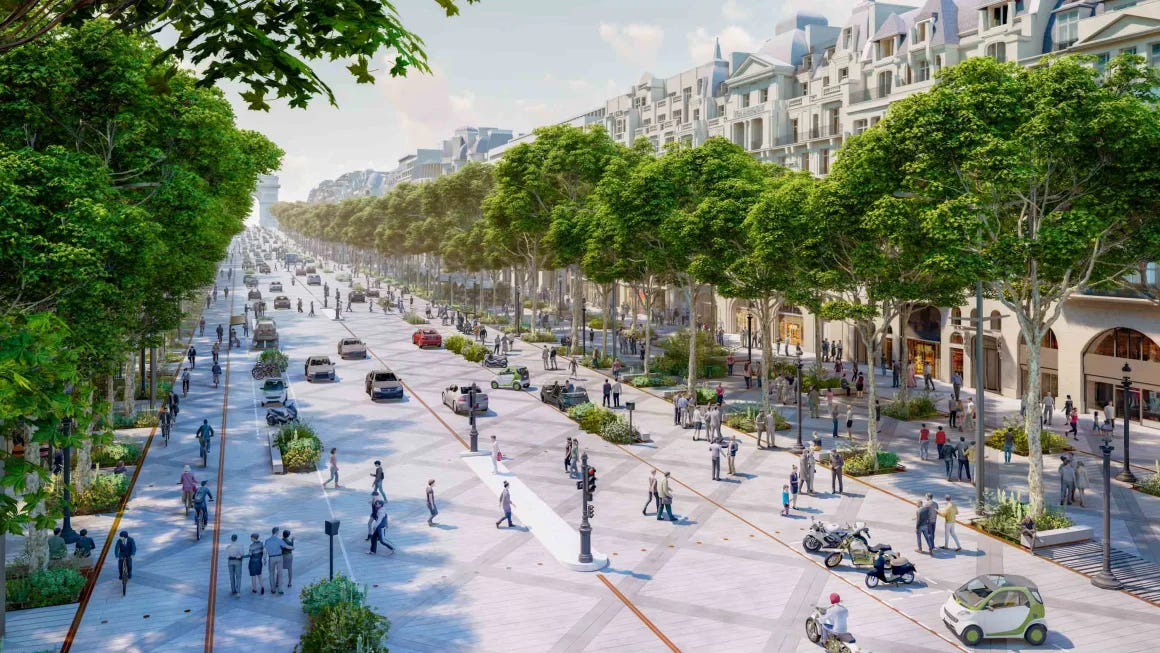Will Paris go even greener?
The turnout was low on Sunday, but those who voted approved Mayor Anne Hidalgo's plan to turn 500 more streets into pedestrian zones by 66% to 34%.
In 2007, my wife and I were living in the apartment we had bought on the avenue Parmentier in Paris’s 11th arrondissement. We were about 20 years into our 30 year stay in the city, during which it underwent a lot of changes (although, fortunately, some of the best things did not change.)
Suddenly, over just a few weeks, the street in front of our apartment building was transformed into a bicycle rental station, with the elimination of a number of parking spaces. It was the birth of Vélib’ Métropole, an ambitious project of bicycle stations and paths designed to get Parisians out of their cars, which were choking the city and diminishing its quality of life considerably.
I was really impressed that Paris officials did not start off with a timid pilot project at just a handful of locations in the city. They immediately went all out, installing some 1500 stations and, as I recall, a starting set of about 15,000 bicycles. No station was more than about five minutes’s walk from another, so that if the spaces were filled with bikes, or there were no bikes, you could access another one easily.
The way they did this was through a partnership with the JCDecaux company. The company was given a monopoly on advertising on Paris kiosks and other city venues, and in exchange paid for most of the costs of installing the bike rental system. It worked right away, and it is still working now.
In the meantime, current Paris mayor Anne Hidalgo, who has been in office since 2014 but is now planning to step down next year, carried out a number of other projects—many of them controversial, especially to drivers in Paris and commuters who drive in from the suburbs—to make Paris greener. (The city still lags behind many other European capitals in the percentage of green space, however.)
On Sunday, the city held a referendum on Hidalgo’s proposal to pedestrianize another 500 streets, turning them into green spaces. If carried out, the plan would bring to about 700 the number of green streets. The turnout was very low (4.06%), but the vote for the plan was high: 65.96% in favor versus 34.04% opposed. With such a low turnout, it is likely that Hidalgo’s plan will be undergoing a lot more debate before it can be implemented.
All this reminds me of an essay by the social theorists Paul and Percival Goodman published back in 1961, entitled “Banning Cars from Manhattan.” It is quite famous among urban planners, utopians, and dreamers of all stripes. Its proposals might seem even more unreachable today given the huge debate over congestion pricing in New York City, but I still read it every year or two and think about what might be possible if we did not spend so much time finding reasons why we can’t have good things.
Indeed, it inspired me to suggest something very modest along these lines in a piece I wrote for the Los Angeles Times some years ago. In that one, I proposed banning cars on Wilshire Boulevard, a major artery in the city. Some of the comments were interesting. One reader asked if I was joking or really serious. A good question, but I was absolutely serious.
At any rate, it was good to see that Anne Hidalgo, even as she leaves office after 12 tumultuous years, might leave a greener Paris as her legacy.
***********************************************************************************************************
To share this post, or to share “Words for the Wise,” please click on these buttons.






